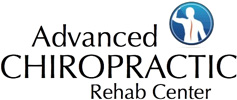
How often have you heard that the best way to prevent lower back pain is to develop strong core abdominal muscles? Chances are you’ve even embarked upon your own crash course in “core strengthening” in order to minimize your struggles with back pain. Although the term core strengthening is now fairly universal, what’s not so clear to all of us is what muscles we are actually supposed to be strengthening in a “core exercise” and more importantly are we doing so effectively.
Understanding the Core
Most experts agree that the primary core muscles are the Transversus Abdominis, Multifidii, Diaphragm, and Pelvic Floor.
Do you really need to know this in order to effectively condition your core? Probably not, but it is helpful to know that the Transversus Abdominis is the deepest of the abdominal muscles and connects the lower ribs to the top of your hip bones (Pelvis) like a corset. Contraction of Transversus Abdominis creates stabilization of the lower back and pelvis acting much like an internal or innate back brace.
Research has clearly shown that in healthy individuals this contraction takes place in anticipation of or prior to movement of the arms or legs. In injured individuals or those with chronic low back pain there is a measurable delay or lack of contraction of the muscle. That delayed or absent contraction translates to more wear and tear on the joints of the lower back and pelvis and can result in injury and/or degeneration of the tissues associated with those joints. Unfortunately after back pain has eased the delayed or absent contraction of Transversus Abdominis does not spontaneously correct.
How to Strengthen the Core
Knowing this information you may now be asking yourself the question:
“How do I strengthen a muscle that isn’t contracting or is slow to do so?”
The answer to that question is that you must retrain the brain and nervous systems connection to the muscle and in essence “wake up” the ability of the muscle to contract, before you can begin to strengthen it.
Best Place to Begin
The best place to begin especially if you are suffering with low back pain would be with a full spinal examination and evaluation. Our expert team will develop an individual treatment plan for recovery and revitalization for they have been assembled to not only help correct spinal injury but to help rehabilitate your body back to its optimal performance.
For Your Health,
Dr. Geoffrey Bossio and Dr. Daniella D'Alessio
